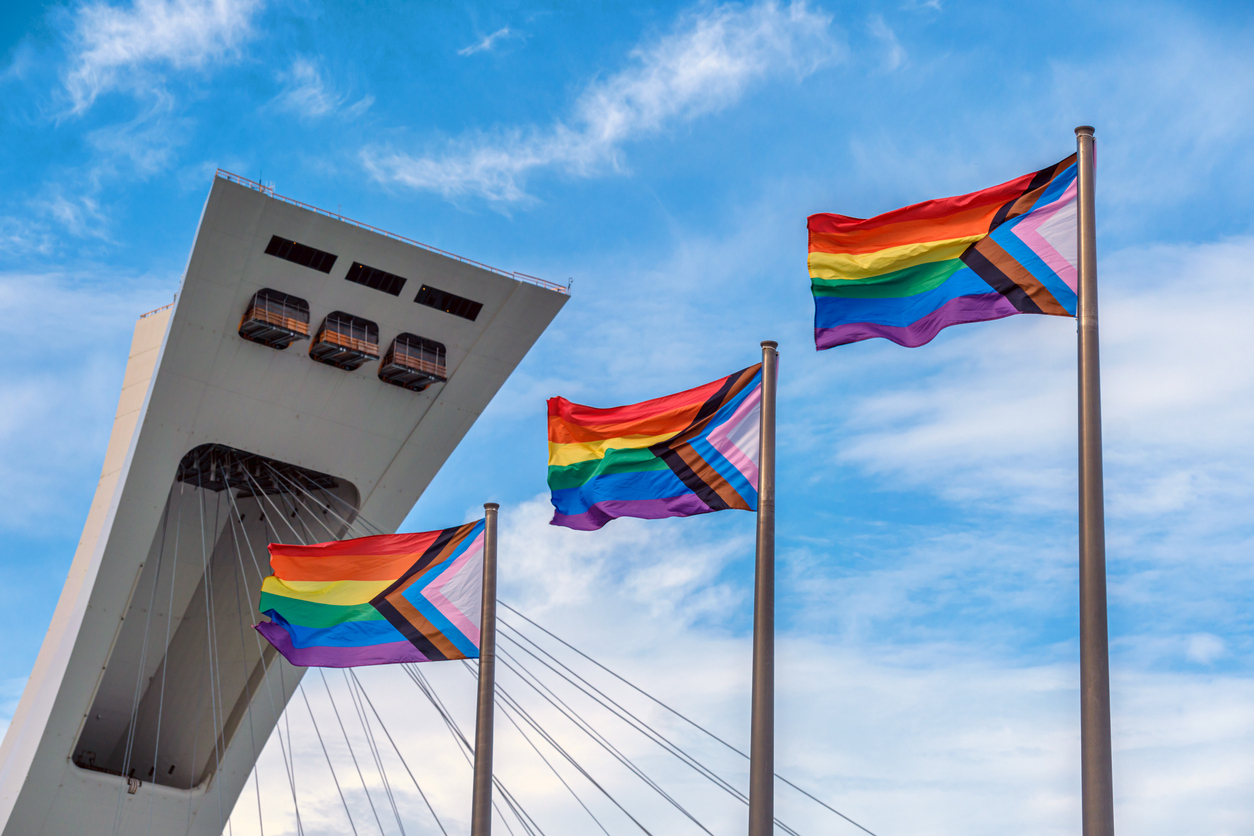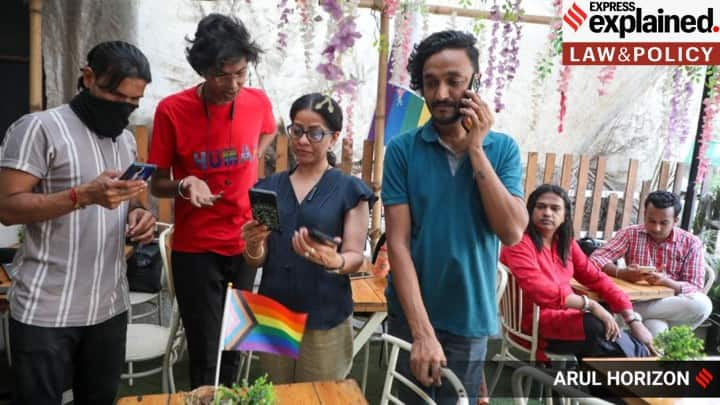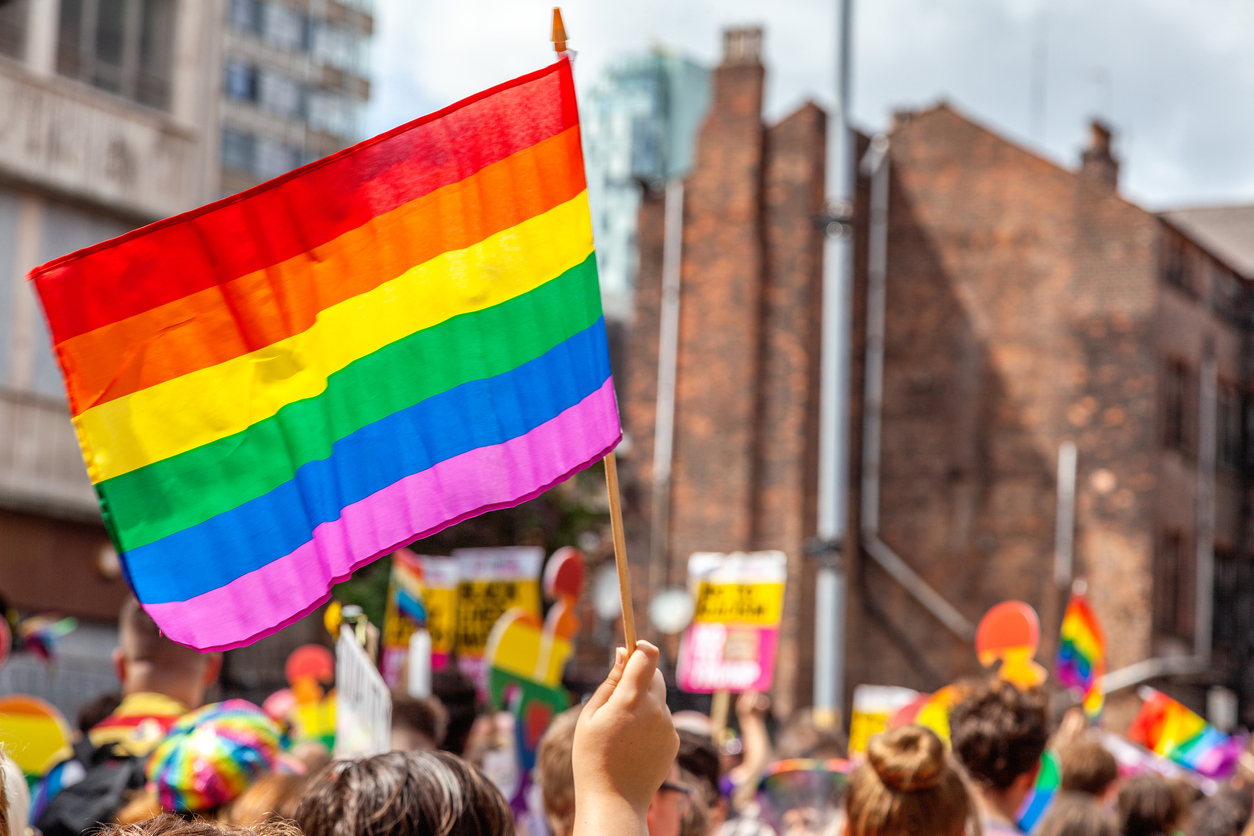
Explained: Advocate Karuna Nundy’s significant arguments on marriage equality
Advocate Karuna Nundy presents two constitutionally compliant principles to balance the interests of women and transgender people in the marriage equality debate and demonstrates how the government of India’s core argument against marriage equality is weak based on the government’s own past record
The days following April 18, 2023, proved to be significant for both supporters and opponents of marriage equality, as a five-judge constitution bench of the Supreme Court heard arguments about the merits and demerits of the case. On the very first day of the hearing itself, the contours of the case were determined. If the court were to grant legal recognition to queer marriage, it would only affect secular marriage laws such as the Special Marriage Act of 1954 (SMA), the Foreign Marriage Act of 1969, and the Citizenship Act of 1955. The effect that such a ruling could have on ancillary laws relating to adoption, insurance, inheritance, and taxation remains to be seen and has evoked strong opposition from the Solicitor General of India, representing the Indian government who said that “about 160 sections from various provisions of law,” apart from the SMA, would not be reconcilable with what the petitioners have prayed for in this case.
While the question of harmonizing ancillary laws flowing out of the aforementioned three secular marriage laws and the appropriate forum to debate this issue – whether it is the Parliament or the court – continues to be discussed before the five-judge bench, Advocate Karuna Nundy made two significant arguments on Day five of the hearings that could have positive ramifications for the queer community. Unfortunately, the substance of her arguments has received scant media attention.
One argument relates to transgender marriages, and the other pertains to the problem with a gender-neutral reading of the words “husband-wife” and “male-female” in secular marriage laws.
The Legal Status of Transgender Marriages in India
In her submissions, Ms. Nundy challenges the Indian government’s claim that it has a “legitimate state interest” in restricting marriage to “biological males and biological females” only. Additionally, she proposes two doctrinal principles that would not only provide a minimal interpretation of secular marriage laws but also preserve the heightened protections afforded to cisgender women under Article 15(3) of the Constitution. This approach balances the interests of cisgender women and transgender people, ensuring that the two do not conflict with each other. This is particularly relevant given the current situation in countries like the United States and the United Kingdom, where powerful anti-trans lobbyists have convinced the public that transgender rights are antithetical to women’s rights. This has resulted in a slew of anti-transgender legislation in the United States ostensibly aimed at “protecting” women.
In 2014, the Supreme Court of India delivered a landmark verdict on Transgender Rights in National Legal Services Authority (NALSA) vs. Union of India. Among other things, the judgment affirmed the existence of the “Third Gender” as a distinct yet equal category of gender under the law, which includes within its ambit people who identify as Hijras, eunuchs, Kothis, Aravanis, Jogappas, Shiv-Shakthis, etc. The judgment also called on the state to “adopt appropriate legislative and other measures to prohibit and eliminate discrimination in the public and private spheres on the basis of sexual orientation and gender identity.” The term “public sphere” is essential here because a key contention of the Indian government towards marriage equality has been that marriage is a “public issue.” The Government argued that while NALSA and Navtej Singh Johar v. Union of India conferred upon sexual and gender minorities the right to privacy, that right could not be extrapolated to extend to marriage which falls in the public sphere. This line of reasoning is wrong and the NALSA verdict clearly states otherwise. Furthermore, NALSA also talks about marriage and states that “No status, such as marriage or parenthood, may be invoked as such to prevent the legal recognition of a person’s gender identity.” This means that a person’s gender identity cannot be denied or ignored just because they are married or have children. Thus, married cisgender, heterosexual people also have the right to change their gender identity if they so wish even after entering into a marriage.
It is precisely this point that Ms. Nundy pointed out while alluding to The Transgender Persons (Protection of Rights) Rules, 2020, on Day five of the hearing. The Transgender Persons (Protection of Rights) Rules were enacted by the Government of India to carry out the provisions of The Transgender Persons (Protection of Rights) Act, 2019.
Form 2 of the Rules contains the format of an affidavit that a person applying for a transgender identity certificate must fill out and submit to the District Magistrate. That form allows the individual to mention their spouse’s name in the affidavit. Similarly, the annexure of the Rules mentions a list of official documents that the individual can submit while applying for an identity card. Serial number 12 of the annexure includes a marriage certificate. This implies that while framing the Rules, the government of India foresaw the possibility of cisgender people in heterosexual marriages realizing they are transgender during the marriage. In line with NALSA, not only are such people allowed to transition while being married and raising kids, but even after transitioning, their marriage cannot be deemed void or voidable. This challenges the notion that the government of India is interested in protecting the “institution of heterosexual marriages” by limiting it to ‘biological males” and “biological females” because the same government formulated an Act and a Rule that allows for a queer marriage to continue between a cisgender and a transgender person post-transition.
What the petitioners are seeking in their prayers is that this right to marry be extended to include transgender individuals pre-transition and to also include transgender-to-transgender marriages. It should be noted that judicial precedent for post-transition transgender-cisgender marriage already exists, as demonstrated in the 2019 verdict of the Madras High Court in the case of Arunkumar & Other vs. The Inspector General of Registration & Others. The court held that a marriage between a cisgender man, Arunkumar, and a transwoman, Ms. Srija, is valid under Section 5 of the Hindu Marriage Act of 1955 and that the Registrar of Marriages must register it. The court also held that the term “bride” in the Hindu Marriage Act must include transwomen and intersex people/transgender people who identify as women.
Although the scope of the marriage equality case at present does not include personal laws, the Arunkumar verdict shows that constitutional courts can extend marriage rights to queer people, including transgender people post-transition.
If the government of India had a legitimate interest in limiting marriage to cisgender, heterosexual people only, it would have nullified or attempted to nullify the Arunkumar verdict and parts of NALSA that spoke of “public rights” and marriage. However, the same government that opposes marriage equality today stands by The Transgender Persons (Protection of Rights) Act, 2019. This is hypocritical and showcases the inconsistencies in the government’s position.
Balancing the Interests of Women and Transgender People: A Rejection of Gender Neutrality
Although the NALSA verdict afforded increased protections to transgender people, Ms. Nundy questioned the need for a gender-neutral reading of secular marriage laws, as it may run afoul of Article 15(3), which grants special provisions for the welfare of women and children. To reconcile Article 15(3) with the needs of the queer community, Ms. Nundy articulated two doctrinal principles: first, to replace “man” and “woman” with “man or third gender person” and “woman and third gender person,” and second, to replace “husband” and “wife” with “husband or third gender person” and “wife or third gender person,” thereby keeping the original intent of Article 15(3) in place while recognizing the rights of the transgender community.
Indeed, the ongoing debate around marriage equality in India has brought to the fore many complex legal issues. Although Ms. Nundy’s position against gender neutrality makes her stand out as different from the petitioners before her, it does urge the court and the public to think more closely about the balancing interests of cisgender women and transgender people, ensuring that the two do not conflict with each other the way they seem to in the United States and the United Kingdom. Moreover, the fact that the government of India has allowed certain types of queer marriages to continue between cisgender and transgender people post-transition calls into question the government’s core intent. The ongoing discussions around this case will have far-reaching implications, and it remains to be seen how the court will eventually rule in this case.



